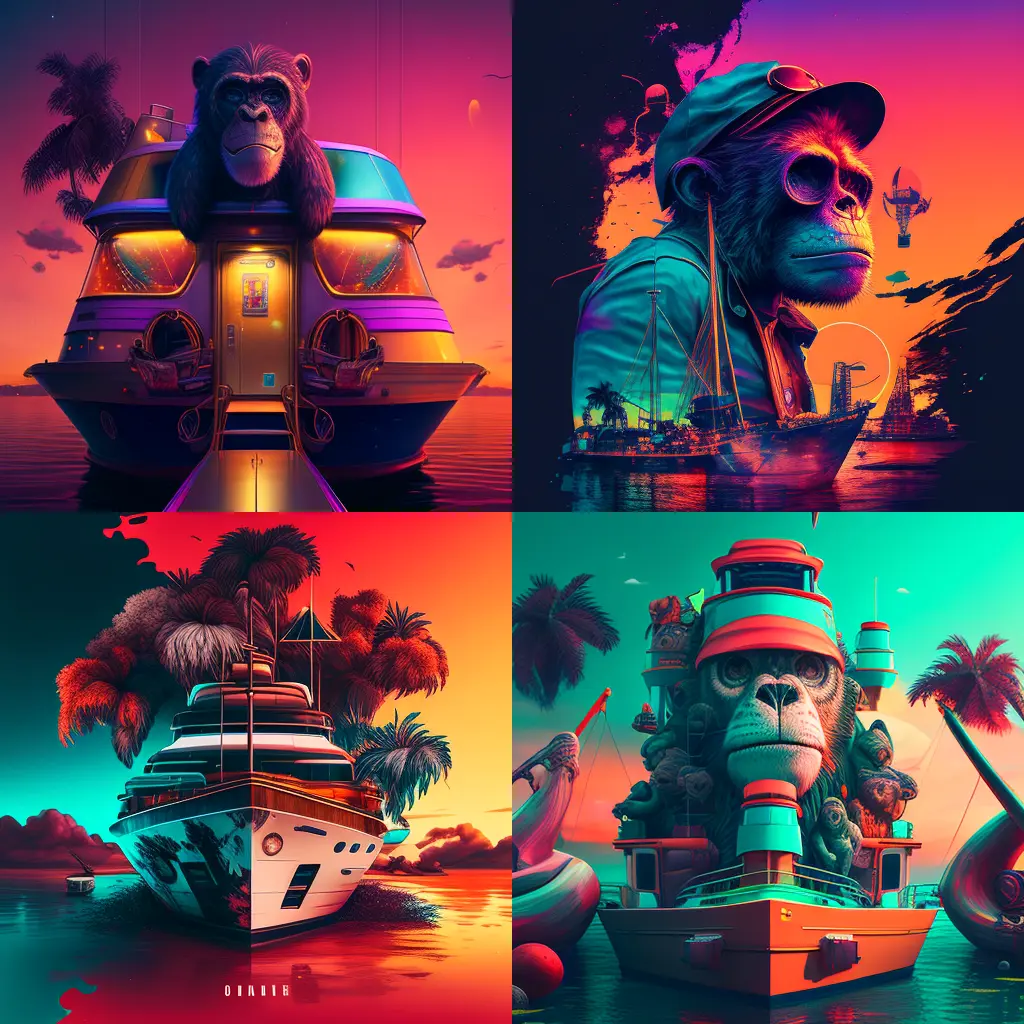Nonfungible tokens (NFTs) have revolutionized the world of digital art, collectibles, and various other unique digital assets. As a growing market, many creators and collectors are looking to make their own NFTs. This comprehensive guide will take you through the process of creating an NFT step by step, from understanding the basics to minting and listing your digital masterpiece.
Understanding NFTs and Their Value
What is an NFT?
 Nonfungible tokens, or NFTs, are unique digital assets that represent ownership of a specific item or piece of content. Unlike cryptocurrencies such as Bitcoin, which are fungible and interchangeable, each NFT has a unique identifier that makes it distinct and non-interchangeable.
Nonfungible tokens, or NFTs, are unique digital assets that represent ownership of a specific item or piece of content. Unlike cryptocurrencies such as Bitcoin, which are fungible and interchangeable, each NFT has a unique identifier that makes it distinct and non-interchangeable.
Blockchain technology plays a crucial role in the NFT ecosystem. NFTs are stored and managed on a decentralized, tamper-proof digital ledger, ensuring that each token’s provenance and ownership information is secure and transparent. This allows NFTs to be bought, sold, and traded without the need for intermediaries or centralized platforms.
In the digital ecosystem, NFTs have found applications in various domains, including digital art, collectibles, virtual goods, and intellectual property. They allow creators to monetize their work in new ways, while collectors can own and showcase unique digital assets with intrinsic value.
Unique Value Proposition of NFTs
The unique value proposition of NFTs lies in three main aspects: ownership and provenance, scarcity and rarity, and digital permanence and transferability.
Ownership and Provenance: NFTs grant digital ownership rights to their holders, providing a transparent record of provenance on the blockchain. This allows creators to authenticate their work and offers collectors the certainty that they possess a genuine, original piece.
Scarcity and Rarity: NFTs can be created with a limited supply, making them scarce and potentially more valuable. Creators can choose to mint a single, one-of-a-kind NFT or a limited edition series, imbuing each token with a sense of rarity that can increase its desirability and worth.
Digital Permanence and Transferability: Unlike traditional digital files, which can be copied and shared infinitely without loss of quality, NFTs are secured by blockchain technology, ensuring their permanence and uniqueness. This also enables the frictionless transfer of ownership from one person to another, without the need for intermediaries or third-party verification.
Preparing Your Digital Asset
Selecting Your Digital Asset
Before creating an NFT, you need to decide what type of digital asset you’d like to tokenize. Some common types of assets include:
Art: Digital paintings, illustrations, or photographs
- Music: Audio tracks, albums, or sound effects
- Video: Short films, animations, or video clips
- Virtual Land: Parcels of digital real estate in virtual worlds
- Collectibles: Digital trading cards, virtual goods, or in-game items
When choosing an asset, consider the following factors:
- Uniqueness: A distinctive and original asset is more likely to capture the attention of potential buyers.
- Market Demand: Research the NFT market to identify trends and areas of interest for collectors.
- Personal Passion: Selecting an asset that you’re genuinely passionate about will make the creation process more enjoyable and result in a more authentic final product.
You can create your own digital asset or collaborate with other artists and creators to develop a joint project. Alternatively, you can source an existing asset, provided you have the necessary permissions and rights to use it.
Digital Asset Specifications
After selecting your digital asset, it’s essential to ensure that it meets the technical specifications required for NFT creation. These specifications include file types and formats, image and video resolution, and metadata and descriptions.
File Types and Formats: Most NFT platforms support common file types such as JPEG, PNG, GIF, MP3, and MP4. However, some platforms may also support specialized formats like SVG for vector graphics or GLTF for 3D models. Check the requirements of your chosen platform to ensure compatibility.
Image and Video Resolution: High-quality images and videos are more likely to attract potential buyers. For images, aim for a resolution of at least 1080p (1920x1080 pixels). For videos, opt for at least 720p (1280x720 pixels), though 1080p or higher is preferable.
Metadata and Descriptions: Metadata is the information that accompanies your NFT, including the title, description, creator, and other relevant details. A well-crafted description can help convey the value and story behind your digital asset, increasing its appeal to potential buyers. Be sure to include any relevant keywords or tags to help users discover your NFT more easily on the platform.
Choosing a Platform and Blockchain
NFT Marketplaces and Platforms
To create and sell your NFT, you’ll need to select a suitable marketplace or platform. Some popular options include:
- OpenSea: A large, open marketplace that supports a wide variety of digital assets and is compatible with the Ethereum and Polygon blockchains.
- Rarible: A decentralized NFT platform that allows users to create, buy, and sell NFTs on the Ethereum blockchain, with a focus on digital art and collectibles.
- SuperRare: A high-end platform specializing in unique, single-edition digital art pieces, built on the Ethereum blockchain.
When choosing a platform, consider the following criteria:
- Fees: Platforms may charge fees for minting, listing, and selling NFTs. Compare fees across different platforms to find the most cost-effective option for your needs.
- Audience: Different platforms cater to different audiences and niches. Research each platform’s user base to ensure it aligns with your target audience.
- Features: Some platforms offer additional features, such as customizable smart contracts, social features, or promotional tools. Evaluate these features to determine which platform best supports your goals.
Selecting a Blockchain
NFTs can be minted on various blockchains, each with its own unique features and benefits. Some popular options include:
- Ethereum: The most widely used blockchain for NFTs, Ethereum offers a vast ecosystem of decentralized applications (dApps), wallets, and marketplaces. However, it can suffer from high gas fees and network congestion.
- Binance Smart Chain (BSC): BSC is an alternative to Ethereum with lower gas fees and faster transaction times. However, it’s more centralized and has a smaller NFT ecosystem compared to Ethereum.
- Flow: Developed by the creators of CryptoKitties, Flow is a blockchain designed specifically for digital collectibles and NFTs. It offers low fees and a user-friendly experience but has a smaller network compared to Ethereum and BSC.
When selecting a blockchain, consider factors such as gas fees, environmental impact, and network effect. Gas fees can significantly impact the cost of minting and trading NFTs, so choose a blockchain with reasonable fees. Additionally, consider the environmental impact of each blockchain, as some utilize more energy-efficient consensus mechanisms than others. Finally, consider the network effect, as a larger user base and ecosystem can make it easier to buy, sell, and promote your NFT.
Minting Your NFT

Creating a Digital Wallet
Before minting your NFT, you’ll need to set up a digital wallet to store and manage your tokens. Some popular wallet options include:
- MetaMask: A browser extension available for Chrome, Firefox, and Brave, MetaMask allows you to interact with the Ethereum blockchain and compatible dApps directly from your browser.
- Trust Wallet: A mobile wallet app for iOS and Android that supports multiple blockchains, including Ethereum, Binance Smart Chain, and others.
When setting up your wallet, you’ll be provided with a public key and a private key. Your public key serves as your wallet’s address, which you’ll use to receive tokens and interact with dApps. Your private key is a secret code that grants access to your wallet and should never be shared.
To secure your wallet and private keys, follow these best practices:
- Create a strong, unique password for your wallet.
- Enable two-factor authentication (2FA) if available.
- Store your private key offline, such as on a hardware wallet or written down on paper, and keep it in a secure location.
Minting Process
Once your digital wallet is set up, you can proceed with the minting process. The steps may vary slightly between platforms, but the general process is as follows:
- Connecting your wallet to the platform: Visit your chosen NFT platform and follow the instructions to connect your wallet. This typically involves selecting your wallet from a list of supported options and approving the connection request.
- Uploading your digital asset and adding metadata: Locate the “Create” or “Mint” button on the platform and upload your digital asset. Fill in the required metadata, such as title, description, and any additional details relevant to your asset.
- Setting royalties and other customizable features: Many platforms allow you to set royalties, which are a percentage of future sales paid to the original creator. You may also be able to set other customizable features, such as unlockable content or limited edition status.
- Paying gas fees and confirming the transaction: Once your NFT is ready to be minted, you’ll need to pay the required gas fees, which cover the cost of processing the transaction on the blockchain. Review the transaction details, and if everything looks correct, confirm the transaction. Your NFT will then be minted and added to your wallet.
Note that the transaction may take some time to complete, depending on network congestion and the chosen blockchain.
Listing and Promoting Your NFT
Listing Your NFT for Sale
Once your NFT is minted, the next step is to list it for sale. There are different pricing options to consider, including fixed-price, auction, and reserve price listings.
- Fixed-price: Set a specific price for your NFT that buyers must pay to acquire it.
- Auction: Allow buyers to place bids on your NFT, with the highest bidder winning the token at the end of the auction period.
- Reserve price: Set a minimum price that must be met for the NFT to be sold, often combined with an auction format.
When pricing your NFT, consider the following tips:
- Research similar NFTs to gauge market demand and pricing trends.
- Factor in the rarity and uniqueness of your digital asset.
- Consider your costs, such as minting fees and platform fees.
Create an attractive listing by including high-quality images or previews of your NFT, a well-written description, and relevant tags or keywords to help potential buyers discover your token.
Marketing and Promoting Your NFT
Effectively marketing and promoting your NFT can greatly increase its visibility and attract potential buyers. Here are some strategies to consider:
- Social Media Promotion: Share your NFT on platforms like Twitter, Instagram, and Facebook to reach a broader audience. Use relevant hashtags and engage with other creators and collectors in the space.
- Discord Communities: Join Discord servers related to NFTs, digital art, or your specific niche. Participate in discussions, share your work, and network with other enthusiasts and collectors.
- Engaging with NFT Communities: Be an active participant in online forums, subreddits, or other community spaces focused on NFTs. Share your knowledge, offer feedback, and showcase your NFTs to interested parties.
- Collaborations and Partnerships: Partner with other creators, influencers, or brands to cross-promote your NFTs, leveraging each other’s audience and reach.
By employing these strategies, you can effectively promote your NFT, increase its visibility, and improve your chances of finding a buyer for your unique digital asset.
Conclusion
Creating an NFT is an exciting and potentially rewarding endeavor. By following this comprehensive guide, you can successfully mint, list, and promote your unique digital asset, tapping into the ever-growing NFT market. With dedication and creativity, the possibilities are endless in the world of nonfungible tokens.




